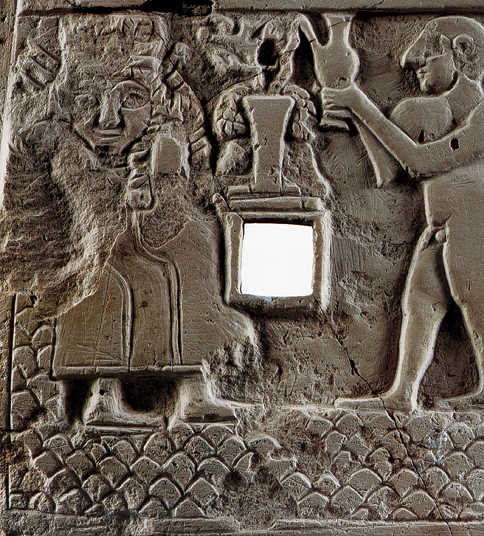Image Details

Musée du Louvre, Paris
The exalted lady. Ninmah, the Mesopotamian mother-goddess, accepts a worshiper’s offering in this third-millennium B.C. wall plaque from Telloh (formerly Girsu), in Sumer (just northwest of the Arabian Gulf). The goddess was also known as Ninhursag, “the Lady of the Mountain,” and Nintu, “the Lady of Begetting”—names that identified her powers as well as her strong personality.
Ninmah, like the other Sumerian gods, was recognized as a natural force. As Ninhursag, she was responsible for the creation of goddesses; as Ninmah, for the creation of humans. She and the other gods met regularly to decide how to deal with their creation and caused floods and other disasters. Like the Greek pantheon, the Mesopotamian gods were thought to strike when angered. Theologian Walter Brueggemann, with whom author Hanson differs, believes that the biblical God was not far different and uses such terms as “wild capriciousness” and “loose cannon” to describe the God of Israel. Hanson, however, counters that this understanding fails to account for a key feature of Israel’s concept of its deity: God is the creator of a moral universe who shows anger—as well as love—in order to maintain the moral order and to save humanity.
